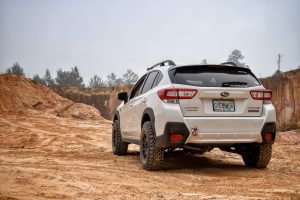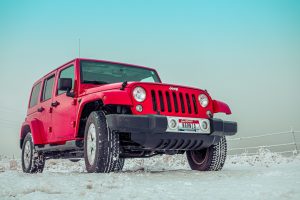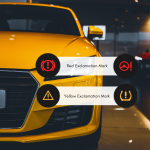There are four diverse approaches to setting up the drivetrain: all-wheel drive, front-wheel drive, four-wheel drive, and rear-wheel drive.
By understanding the differences between 4WD, FWD, RWD, and AWD, you will be able to select the right one for your requirements.
Vehicle manufacturers make automobiles, and the engine transfers power to two or more wheels. Different sorts of drives have various ways of driving and obtaining traction.
In today’s guide, we will explain how 4WD, RWD, FWD, and AWD all work.
What Does FWD Mean On A Car?
Are you wondering “what the FWD on your car means?” The meaning of FWD on a vehicle is that the power from the engine is sent to the car’s front wheels.
With FWD, the front wheels pull forward or backward your vehicle, and the back wheels rotate accordingly but don’t get any power from the front wheels.
Most cars today are FWD, meaning this technology has been present since the early years of vehicles, but it became more common after the 1970s.
Before the 1970s, the majority of automobiles were RWD. The advantages of FWD cars are that they normally acquire improved fuel economy and release less carbon dioxide.

Is front-wheel drive good in snow? Since the engine’s weight is placed over the front wheels, an FWD car offers excellent traction in the snow. Nevertheless, these automobiles are less fun to drive.
Pros:
- Better traction
- Less weight increases gas mileage
Cons:
- Not good at ice and gravel
- Can produce an understeer
What is RWD in Cars?
RWD means in cars, the power from the engine is transferred to the back wheels, and they push the vehicle forward or backward.
RWD is basically the opposite of FWD. The rear wheels push RWD cars; the front wheels don’t procure any power and are free to move the car.
Because the RWD car’s weight is more evenly spread than a front-wheel drive car, it generates a better weight balance. That’s why most sports cars are RWD and more fun to drive.
The downside of RWD, meaning automobiles is that they don’t perform efficiently in extreme weather conditions such as snow or rain because they are more disposed to lose traction on slippery roads.

Pros:
- Improved handling
- Excellent brake
- Accelerate quickly
Cons:
- Poor traction on snow and ice
- Not better than front-wheel drive cars on wet road traction
What is 4WD Meaning On A Car?
4WD meaning on a vehicle is that the power from the engine is supplied to all four wheels and has the option to work in a rear-wheel drive format to save fuel.
The majority of off-road-ready SUVS come equipped with a 4WD system. They provide better traction and towing ability and typically permit pulling heavier loads.
The notable benefit of a 4WD automobile is that it offers the adaptability and power to take on any weather conditions or terrain. However, their drawback is that they work in RWD mode mostly and have less traction than an AWD car.

Pros:
- Best for serious off-roading
- Provides you excellent grip
Cons:
- Poor gas mileage
What Is AWD Meaning On A Car?
AWD means in an automobile that, the engine’s power is delivered not only to the rear or front wheels but to all four wheels to push the car in either direction.
Because AWD was intricate to install until recent years, all-wheel drive automobiles have been uncommon and more expensive.
However, this drivetrain rapidly became a popular substitute as car manufacturers determined how to make AWD technology more reliable and affordable.
AWD vehicles are not as capable off the road as 4WD cars, but they enhance traction, leading to better handling on the tarmac.

Pros:
- Moves faster
- Improved grip in snow
Cons:
- Expensive
Are AWD Cars Better Than FWD Cars?
If you wish to drive on unpaved terrain, AWD cars are the best. When you drive on soft ground, your drive wheels lose traction.
AWD systems are intended to enhance the car’s grip on every sort of ground. On the flip side, FWD cars function remarkably on mild off-road grounds.
A new FWD car can handle a few miles of unpaved terrains without issues. Generally, AWD automobiles handle more admirably in wet weather conditions.
They are great at detecting the wheels’ slightest slipping and rapidly adapting. AWD helps keep the vehicle steady on slippery roads; if and when the wheels commence slipping, it instantly kicks in to aid.
In snow, AWD cars are preferable because they have traction and stability controls, so they can safely handle most snow conditions.
Frequently Asked Questions:
Does FWD Mean Four-Wheel Drive?
FWD means front-wheel drive. FWD automobiles are pushed forward or backward by the front wheels only. The engine delivers power to the front two wheels, thus moving the vehicle backward or forward. The back wheels spin accordingly but don’t obtain any power from the front wheels.
Why is FWD So Popular?
FWD vehicles have become extremely popular because they are more economical to make and buy. If you are looking at the economy, FWD cars give you everything you want at a rate less than RWD cars.
Is FWD The Same As 4WD?
The major dissimilarity between four-wheel and front-wheel drive cars is the number of tires in snow they can transfer power to. An FWD car can only deliver power to the front wheels. However, a 4WD vehicle can supply power to all four wheels, which can be useful in several situations, but normally use the two back wheels.
Conclusion
Selecting the correct type is essential for you and your vehicle. If you reside in a region that gets a lot of snow, 4WD cars are the perfect option.
However, AWD cars are the best if your area gets moderate snow. For most vehicles, the FWD drivetrain is the ideal option and will also cost less. Follow CarDecent for useful tips on car repair and maintenance.
Last Updated on February 16, 2023 by admin

Mac is an Automotive enthusiast. He owns up to 15 vehicles. He deals with Auto problems and shows his skill to Car owners who are seeking any type of Car help.





